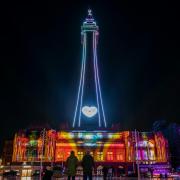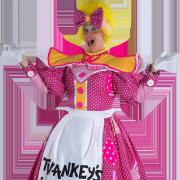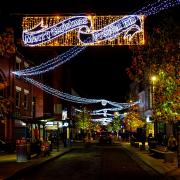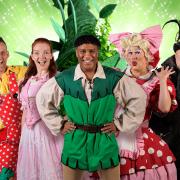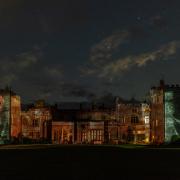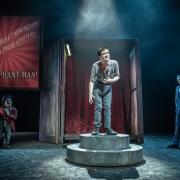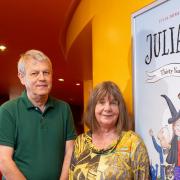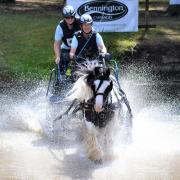A Bolton woman is bringing shows and exhibitions to life for people with visual impairments

Anne Hornsby's job means she spends most of her time in theatres, in galleries and museums looking at the best ways to talk about exactly what she is seeing.
Anne, who lives in Bolton, is an audio describer, someone who regularly, as she explained, "fills the visual gaps" for people who are registered blind or have sight impairment.
In fact, Anne is a pioneer in this role. She first started more or less by accident 30 years ago when she was in charge of communications at the Octagon Theatre in Bolton.
One day, a woman who had heard of audio description in America asked if this service was available in Bolton. Anne thought "why not?" and, with the help of the theatre's head technician devised a way for her to have a description of a production through a headset.

She attended performances with her eyes shut first to try to appreciate what was missing and what she needed to know. Then she devised a script to fill those important gaps.
This proved such a success that the Octagon went on to provide the system as a regular service and to extend it. Anne's enthusiasm, plus the help of Disability Access Discrimination legislation, encouraged audio description not just locally but nationally.
Since then Anne, who later founded her own company Mind's Eye employing freelance describers, has become acknowledged around the world as an expert. She has won awards for her work, including one from the American Council of Blind People and its Audio Description Project and another, a Special Achievement Award from the Manchester Theatre Awards.
When we chatted, she had just come back from four days in Yekaterinburg in Russia, where she had been speaking about her work and the advances in it.
She was then off to Manchester's Portico Gallery to describe a new exhibition to visitors and the following day to The Theatre by the Lake in Keswick for an audio description performance of Little Voice by Bolton's Jim Cartwright.
'Yes, it's varied,' she laughed. 'But I do like that element.'
In the last 12 months, Anne has attended around 50 theatre productions and other events. She sees a production probably four times before describing it, often attending rehearsals, and working with a script. She notes everything from important points in the plot, descriptions of the sets, costumes and actors and focusing on any particularly relevant detail.
For the audio description performance, whether for a group or for individuals, theatres provide headsets. She will then position herself either in the lighting box or an adjacent room 'I prefer to be in the lighting box in the theatre itself because there are certain things that happen - especially in pantos which often have asides - that you have to see happening live,' she said.
Anne then provides a description "in their ear" on a special audio loop, speaking clearly and articulately in her modulated, accent-neutral tones. She explains what is happening at timely spaces without dialogue or audience reaction. Her timing needs to be spot-on.
'For example, if I know the phone is going to ring or someone will bang a cup down, I mustn't refer to anything before it happens.'
She needs to concentrate throughout, sometimes describing in detail costumes and who is where on the stage to set the atmosphere properly. 'The main thing is that people with visual impairment can really enjoy the performance, just like the rest of the audience,' she added.
The same criterion applies to exhibitions and museum events. Here, Anne may be working alongside a curator so she can give a description of paintings and artefacts in detail - a kind of tour around the work, and then the curator will add its background and other relevant information to increase audience appreciation.
Theatres also have "touch tours" which allow anyone with a visual impairment to touch props and costumes. 'The actors are also very good when we have these tours and will offer information and answer people's questions,' Anne added.
She also describes for children - 'you have to keep the descriptions very light and interesting for them' - and loves watching the resulting delight and wonder in their faces.
Audio description has advanced over the years and Anne is very grateful for these improvements. Some theatres now have WiFi where individuals can download an app and use their own headset or ear pods for the description.
However, Anne would like to see more audio description performances scheduled (there is usually only one during a show's run) and a matinee as well as an evening performance available.
She also trains staff in audio description to enable shows and tours to be more effective.
So, has Anne herself ever laughed in inappropriate places while describing? 'Well, when it's funny, I do often snort at rehearsals. But I control myself when it comes to the actual audio description, thank goodness!'








